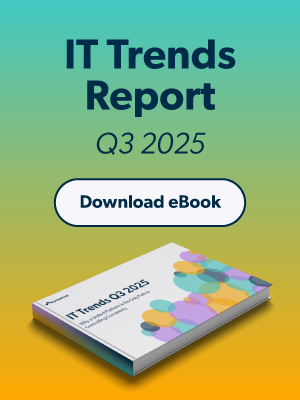Updated on February 14, 2025
Managing user access in today’s complex IT ecosystems is no small feat. With the increasing adoption of cloud services, applications, and data-sharing platforms, organizations face growing challenges in securing and governing access to their IT resources. This is where entitlement management comes into play—a critical component of modern identity and access management (IAM) frameworks.
Entitlement management simplifies the process of controlling and monitoring who has access to what within an organization. From ensuring regulatory compliance to enhancing operational efficiency, it’s a must-have solution for IT professionals seeking secure and efficient access governance.
In this article, we’ll explore what entitlement management is, why it’s essential, its key features, real-world applications, and actionable tips for implementation.
What is Entitlement Management?
Entitlement management is the process of defining, granting, managing, and monitoring user access rights to various organizational resources.
These “entitlements” specify what actions an individual user—or a group of users—can perform in an environment, based on predefined roles, policies, and conditions.
Core Concepts of Entitlement Management
Before we explore further, let’s clarify some key terms:
- Entitlements: Specific permissions tied to a user, role, or group. For example, the ability to modify files in a shared folder.
- Resources: Systems, applications, and data repositories users access.
- Access Policies: Rules and conditions that govern access, designed to comply with security standards and business requirements.
When integrated correctly, entitlement management ensures authorized users have appropriate access—nothing more and nothing less.
Why is Entitlement Management Important?
Organizations are managing increasing numbers of user accounts, cloud services, and devices, leading to complex access scenarios. Without proper entitlement management, organizations risk:
- Data breaches from unauthorized access.
- Privilege creep, where users end up with more permissions than necessary.
- Non-compliance with regulations such as GDPR, HIPAA, or PCI DSS.
Entitlement management reduces these risks by enabling centralized access control, automation, and visibility into user permissions.
Features of Entitlement Management
A robust entitlement management solution includes features engineered to optimize security and streamline operations:
Centralized Control
Manage all user access permissions from a single, unified platform. This ensures consistency across your organization and simplifies oversight by reducing the complexity of managing permissions across multiple systems.
With centralized control, administrators can quickly address access issues, improving both security and efficiency.
Real-Time Access Updates
Automate provisioning (granting access) and de-provisioning (revoking access) to ensure users have the right level of access based on their current roles or employment status. These automated updates help reduce the risk of unauthorized access and ensure employees can seamlessly transition into new roles without delays in system access.
Integration with IAM
Seamlessly integrate with existing Identity and Access Management (IAM) platforms like JumpCloud to enforce consistent access policies across all applications.
By leveraging identity, roles, and security conditions, this integration ensures each user has access to the right resources, improving both security and productivity while maintaining a frictionless user experience.
Compliance Monitoring and Reporting
Generate audit-ready reports to demonstrate compliance with regulatory standards such as GDPR, HIPAA, or SOX. These detailed reports help you monitor access activities, identify potential security gaps, and showcase your organization’s commitment to maintaining a secure and compliant environment.
The Benefits of Entitlement Management
Implementing entitlement management yields a range of advantages for modern organizations:
Enhanced Security
By eliminating unnecessary or outdated permissions, entitlement management reduces the risk of unauthorized access and data breaches.
Operational Efficiency
Automated workflows simplify the process of granting and revoking access, freeing IT admins to focus on higher-priority tasks.
Stronger Regulatory Compliance
Track and audit access activities to ensure compliance with industry regulations, avoiding costly fines and reputational damage.
Improved Visibility
Gain actionable insights into user access patterns to make informed decisions and identify potential vulnerabilities.
Key Components of Entitlement Management
Effective entitlement management solutions consist of several core components:
1. Role-Based Access Control (RBAC)
Simplify access management by assigning entitlements based on predefined user roles, such as “HR Manager” or “Backend Developer.”
2. Policy Enforcement
Define and apply rule-based conditions for granting access. For example, allow file access only during work hours or from specific IP addresses.
3. Entitlement Lifecycle Management
Automate the creation, modification, and removal of entitlements throughout a user’s lifecycle to ensure they always have appropriate access levels.
4. Reporting and Auditing
Maintain an audit trail of access events and user activity to facilitate compliance checks and security investigations.
Challenges in Entitlement Management
While entitlement management offers immense benefits, it also presents challenges:
Scalability
Managing access for thousands—if not millions—of users can be overwhelming without the right infrastructure and tools in place.
Organizations must ensure that the system can handle large volumes of users across multiple platforms, while maintaining efficiency and security. Scalability is key to supporting business growth without compromising control.
Complexity
Organizations face the challenge of juggling diverse and constantly evolving access requirements across different teams, departments, and locations. Ensuring the right individuals have appropriate access without creating bottlenecks or delays requires a fine balance between security and usability, often involving complex configurations and policies.
Shadow IT
The growing use of unauthorized applications and platforms, often referred to as shadow IT, creates significant challenges for access management. These tools can bypass traditional entitlement controls, introducing gaps in security and compliance.
Without visibility into shadow IT, organizations risk data breaches and other vulnerabilities.
Adapting to Threats
Cyber threats are continuously evolving, making it essential for organizations to adapt their access controls in real time.
Solutions must be proactive, capable of identifying and addressing vulnerabilities before they are exploited, and ensuring access remains secure even as attack vectors change and become more sophisticated.
How to Implement Entitlement Management
Implementing entitlement management successfully requires a strategic approach:
Assess Your Needs
Begin by documenting the specific resources, roles, and access requirements unique to your business. This involves identifying critical systems, applications, and data that employees need to perform their jobs effectively.
Consider different departments and roles to ensure no access gaps are left unaddressed.
Define Roles and Entitlements
Develop a clear role hierarchy by analyzing the responsibilities of each position within your organization.
Map permissions to each role, ensuring employees have exactly the level of access they need—no more, no less. This minimizes security risks while ensuring efficiency in daily operations.
Select Tools
Choose a robust entitlement management solution that aligns with your organization’s size, goals, and industry-specific requirements. Features such as centralized access controls, scalability, and compliance management are critical.
Automate Workflows
Streamline the provisioning and de-provisioning processes using automation tools. Automating these workflows ensures that new hires are granted access promptly and former employees are removed from systems immediately, reducing the risk of unauthorized access or security breaches.
Review Regularly
Conduct periodic access reviews to validate that entitlements remain current, relevant, and compliant with company policies and regulations.
This helps prevent privilege creep, where employees accumulate unnecessary access over time, and ensures your organization maintains strong security practices.
Real-World Applications of Entitlement Management
Hybrid Cloud Environments
Organizations leveraging hybrid clouds use entitlement management to secure and streamline access across both on-premises and cloud-based resources. This ensures that only authorized users can access sensitive data and applications, regardless of where they are hosted, enhancing security while maintaining operational flexibility.
Financial Compliance
Banks and financial institutions depend on entitlement management solutions to meet stringent regulatory requirements, such as SOX compliance. By maintaining detailed access logs and enforcing strict user permissions, these organizations ensure transparency, reduce risks of fraud, and stay in line with ever-changing compliance standards.
Enterprise-Level0 Automation
In companies with dynamic teams, contractors, and temporary workers, entitlement management enables automated access provisioning and de-provisioning. This not only enhances security but also improves operational efficiency by ensuring employees and contractors have the right access when they need it, while eliminating unnecessary delays or risks associated with manual access management.
The Future of Entitlement Management
The landscape of entitlement management is evolving rapidly, shaped by emerging technologies like:
- AI-Driven Analysis: AI algorithms will enhance the precision of entitlement assignments, predicting appropriate permissions based on user behavior.
- Zero Trust Models: Entitlement management will integrate closely with Zero Trust security frameworks to enforce stricter access controls.
- Advanced Automation: Expect to see greater use of self-service access portals where users can request and adjust their own entitlements (subject to approval).
Entitlement management is more than a buzzword—it’s a vital strategy for organizations navigating the complexities of access control in modern, dynamic IT ecosystems. By implementing a robust entitlement management framework, businesses can strengthen security, ensure compliance, and optimize operations.
Frequently Asked Questions
What differentiates entitlement management from role-based access control (RBAC)?
Entitlement management is a comprehensive process that involves defining, granting, and monitoring access rights across an organization. RBAC, on the other hand, is a specific method within entitlement management that assigns access permissions based on predefined user roles.
How does entitlement management enhance organizational security?
By centralizing and automating access control, entitlement management minimizes the risk of unauthorized access, prevents privilege creep, and ensures that access rights align with organizational policies and compliance standards.
What are some commonly used tools for entitlement management?
Leading entitlement management tools offer features like automated provisioning, compliance reporting, and lifecycle management, making access governance more efficient and streamlined.
What challenges can arise during entitlement management implementation?
Organizations may face challenges such as scaling systems for large enterprises, managing complex access requirements, integrating with legacy or third-party systems, and maintaining regulatory compliance across diverse environments.
Can entitlement management integrate with other access control strategies, such as Zero Trust?
Absolutely. Entitlement management plays a key role in Zero Trust architectures by enabling granular access controls and real-time decision-making based on contextual factors and defined policies. This integration strengthens security and supports a proactive access control approach.





